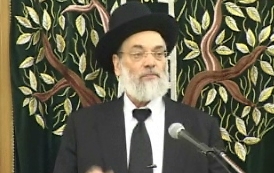Beit Midrash
- Sections
- Chemdat Yamim
- P'ninat Mishpat
Case: It was known in the city that Reuven had a theft in his house. A few days later, two young women said that they saw the stolen object in Shimon’s house, but Shimon denies it.
Ruling: There is a machloket among the dayanim hearing the case if these women’s testimony can be accepted. One cites the Rama (Choshen Mishpat 35:14), based on the Terumat Hadeshen (353) that there is a special enactment that women’s testimony can sometimes be accepted. Other dayanim say that the cases are not similar, as the Terumat Hadeshen is discussing testimony about a woman’s seat in ashul’s women’s section and testimony about which clothes a woman wore while her husband was alive. These are topics about which only women are likely to know.

P'ninat Mishpat (802)
Various Rabbis
391 - Delay in Return of Rented Horse Due to Predictable Flooding
392 - Women’s Testimony on Seeing a Stolen Object
393 - Compensating a Cellphone Owner for Damage Caused During a Repair Attempt
Load More
In fact, the dayan should not have cited the Terumat Hadeshen, as he is discussing the halacha based on Talmudic law. What is pertinent is the Rama (ibid.) based on the Maharik (179), who accepts the testimony of a woman, a relative, or a minor about such things as the disgrace of a respected person. This ruling is a special enactment, not Talmudic law.
On the other hand, the dayanim who reject the testimony because it differs from the Terumat Hadeshen’s case are also not understood, as the Rama includes cases such as seeing a person being disgraced, which is a situation where men and women are equally likely to be present. Rather there are two concepts. In a place where only women are expected to know, we trust them, just as we rely on a midwife to say which twin was born first (Kiddushin 73b). The matter about disgrace is a later enactment relating to uncommon events which occur suddenly without a way to clarify what happened without the women’s testimony. In that case, the Rama (ibid.) limited the acceptance of the testimony to cases where the plaintiff makes a definite claim. This factor is missing here, as Reuven knows only that he was robbed, but not that Shimon was involved.
Our case is different from that of the Rama for another reason. The enactment was for cases where something happened suddenly, so that fit witnesses could not be brought. This could apply to a theft as well. However, regarding seeing Shimon’s possession of the stolen object, the women could have called fit witnesses to confirm the matter. Thus in a case like ours there is no special enactment to enable accepting the women’s testimony.

P'ninat Mishpat: Multiple Agreements and Parties – part II
based on ruling 80082 of the Eretz Hemdah-Gazit Rabbinical Courts
Beit Din Eretz Hemda - Gazit | Kislev 5786

P'ninat Mishpat: Smoking Rights in a Rental? – part II
based on ruling 85076 of the Eretz Hemdah-Gazit Rabbinical Courts
Beit Din Eretz Hemda - Gazit | Tishrei 5786

P'ninat Mishpat: A Seller with Questionable Rights to the Property – part I
based on ruling 84062 of the Eretz Hemdah-Gazit Rabbinical Courts
Beit Din Eretz Hemda - Gazit | Cheshvan 5786


























